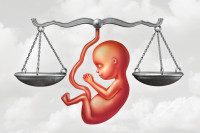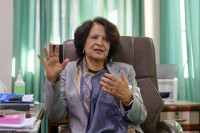Health
Even months into the pandemic, the government has yet to introduce risk communication strategy
Public health experts say failure to communicate with people properly and provide them with accurate information could lead them either to overreact to the risk or undermine it.
Arjun Poudel
The Ministry of Health on Saturday said that 50 percent of those infected with Covid-19 in the country have been discharged after recovery and that the number of new cases in the last 24 hours stood at 70.
Experts, however, say the information does not give an accurate picture when it comes to the risk level, though it might look like the government has been doing well in the fight against the virus, as there has been a steady decline in the number of cases over the past few days.
One of the crucial factors the authorities are missing is a risk communication strategy, according to them.
“Given the lack of it, either misinformation or inaccurate information could reach the public which could be even more hazardous in the time of a pandemic,” said Dr Radhika Thapaliya, a risk communication expert, told the Post. "People are either overreacting to the risk or undermining it. Both overreacting or undermining the risk is dangerous.”
Even after 38 deaths and over 16,700 infections, the government has yet to introduce a risk communication strategy.
According to the World Health Organisation, risk communication strategies include real-time exchange of information, advice and opinions between experts or officials and people who face the threat to their survival, health or economic and social well-being. Through such strategies, everyone at risk is able to make informed decisions to mitigate the effects of the threat and take protective and preventive measures, says the UN health agency.
So far, the Health Ministry’s daily briefings are the only source of information regarding the Covid-19 pandemic, but they are limited to providing the number of new infections. The briefings by the Health Ministry spokesperson do not provide details on the number of test kits it has in stock. Since the media is not allowed during the briefings, there is no two-way interaction.
In the lack of a risk communication strategy, people often tend to believe whatever is fed to them through various mediums, or in most cases, they are unaware of ways to react and respond.
In the third week of June, agitated residents of ward 32 in Pokhara vandalised a police check post demanding that authorities withdraw their decision to bury the body of a man infected with the coronavirus in their area.
Locals argued that Covid-19 could spread if the dead are buried in their area.
A few weeks ago, Kantipur, the Post’s sister paper, reported about ruling party leaders using “virus cards” to “remain safe from the coronavirus”.
Earlier in February, some private laboratories in Kathmandu Valley were found to be issuing ‘coronavirus certificates’ to migrant workers and students, without testing for the virus. Instead of testing for the ‘2019-nCoV’ virus, the labs tested people for gastritis, and asked them for blood samples and chest x-rays before issuing the certificate.
In some municipalities, ward offices were also distributing certificates to individuals with congratulatory messages for testing negative for the virus.
Last month, when the government said it was easing the lockdown, there was no clarity on the modality it would adopt. Barring a few services, such as public transport and cinema halls, almost all businesses had started operations following the government’s announcement.
People started to come out of their homes without adhering to the standard protocols to be followed during a pandemic. Most were seen stepping out into public space without face masks.
“Such activities are happening because of the failure on the part of the authorities to communicate the gravity of the risk to the people," said Thapaliya.
A risk communication strategy necessarily entails communication based on trust between experts, authorities and the people who are affected.
"There is no concrete ground to believe government claims,” said Dr Bhagwan Koirala, chairman of Nepal Medical Council, the national regulatory body of medical doctors. "Government authorities are disseminating information without knowing if the information is practical or effective.”
A recent example is the government’s decision to allow public transport. The government on Thursday said public vehicles would be operated within Kathmandu, Lalitpur and Bhaktapur, among other districts. The move has been widely criticised since.
The general public was largely confused whether it was a good decision, while public health experts were quick to question the modality and rationale behind the sudden decision at a time when the risk of Covid-19 spread is still high and intact.
Even as infections have been detected in hundreds of people without the history of travel to disease-hit areas or coming in close contact with the infected people, the government has said the disease has yet to spread in the community.
“The authorities have failed to tell people what exactly they should do at a time like this,” said Koirala. “The authorities either should communicate that the rise in the number of cases does not fit into the WHO definition of community transmission, or ask people to take precautions and adopt safety measures.”
Meanwhile, the Epidemiology and Disease Control Division said that it has been working to draft a risk communication strategy.
"We have just prepared a preliminary draft, but it is yet to be finalised," Dr Basudev Pandey, director at the division, told the Post.
Earlier, the division had sought help from the World Health Organisation to prepare a risk communication strategy and had invited experts from abroad but due to the transfers of the director and other officials, the initiative could not take off.
"We have to incorporate experts’ suggestions and opinions and we have to hold discussions before finalising the strategy," said Pandey.




 6.1°C Kathmandu
6.1°C Kathmandu














